As a global coffee powerhouse, Starbucks continues to lead the coffee industry with its strong brand, quality products, and innovative customer experience.
However, as we move into 2024, the company faces opportunities and challenges in an evolving marketplace shaped by changing consumer preferences, economic fluctuations, and increased competition.
This SWOT analysis provides an in-depth look at Starbucks’ strengths, weaknesses, opportunities, and threats, offering insights into the company’s strategic positioning and potential pathways for growth.
Starbucks Overview

Starbucks is a global leader in the specialty coffee industry, known for its premium coffee offerings and unique customer experience.
Below is a detailed presentation of Starbucks, covering its history, activities, competitors, suppliers, customers, strategies, and key figures.
History
Starbucks was founded in 1971 in Seattle, Washington, as a single coffee shop selling high-quality beans and equipment.
The company began its transformation into a coffeehouse chain in the late 1980s under the leadership of Howard Schultz, who envisioned a café experience similar to those in Italy.
By the mid-1990s, Starbucks had expanded rapidly across the United States and internationally.
Activities
Starbucks operates as a specialty coffee roaster, marketer, and retailer. Its activities include:
Coffee Retailing: Selling brewed coffee, espresso drinks, teas, and snacks at its stores.
Product Diversification: Offering packaged coffee products through grocery stores and partnerships.
Digital Engagement: Utilizing mobile apps for ordering and loyalty programs to enhance customer experience.
Competitors
Starbucks faces competition from various companies in the coffee and beverage market:
- Dunkin’: Known for affordability and convenience, Dunkin’ has over 13,700 locations globally.
- McDonald’s McCafé: A significant player with over 41,000 locations offering competitive coffee options.
- Costa Coffee: A strong competitor in the U.K. with over 4,000 locations.
- Tim Hortons: A major Canadian chain with over 4,000 locations worldwide.
- Peet’s Coffee: Focuses on artisanal coffee blends and sustainability.
Suppliers
Starbucks sources its coffee beans from various suppliers worldwide. The company emphasizes ethical sourcing through its Coffee and Farmer Equity (C.A.F.E.) Practices program. This program ensures that suppliers adhere to environmental and social standards.
Customers
Starbucks primarily targets:
- Coffee Enthusiasts: Consumers seeking high-quality specialty beverages.
- Millennials and Gen Z: Younger demographics attracted to the brand’s experience-oriented approach.
- Business Professionals: Individuals looking for a comfortable space to work or meet.
Strategies
Starbucks employs several strategies to maintain its market position:
- Product Innovation: Continuously introducing new beverages and seasonal offerings to attract customers.
- Global Expansion: Increasing store presence in emerging markets like China and India.
- Sustainability Initiatives: Committing to eco-friendly practices and reducing carbon footprint.
Key Figures
As of 2024:
- Number of Stores: Approximately 39,000 locations worldwide.
- Sales Revenue: Estimated at $36 billion for fiscal year 2023.
- Countries Present: Starbucks operates in 78 countries globally.
- Market Share: Commands about 39.3% of the U.S. coffee market.
In summary, Starbucks has established itself as a dominant force in the global coffee industry through strategic expansion, product innovation, and a focus on customer experience. Its ability to adapt to market trends while maintaining brand loyalty continues to drive its success.
Starbucks SWOT analysis
We now turn to the results of Starbucks SWOT analysis:
The internal analysis of Starbucks
The main goal of an internal analysis for Starbucks is to gain a deep understanding of its strengths and weaknesses, by evaluating its internal factors.
This self-assessment helps Starbucks management make informed decisions and develop effective strategies for the future.
Strengths of Starbucks
Starbucks has several strengths that set it apart from its competitors in the coffee industry. Here’s a detailed comparison highlighting these strengths, supported by recent data and examples:
Strong Brand Recognition
Starbucks is synonymous with premium coffee and has built a powerful global brand. Its iconic logo and store design are instantly recognizable. As of 2023, Starbucks operates over 37,000 locations worldwide, reinforcing its brand presence in 78 countries.
This extensive network allows Starbucks to maintain a significant market share of 39.3% in the U.S. coffee market, far surpassing competitors like Dunkin’ and McDonald’s.
High-Quality Products
Starbucks is committed to sourcing high-quality coffee beans through its Coffee and Farmer Equity (C.A.F.E.) Practices. This program ensures ethical sourcing and sustainability. The company’s dedication to quality has allowed it to charge premium prices, resulting in annual revenues exceeding $36 billion for the fiscal year ending October 1, 2023.
This focus on quality differentiates Starbucks from competitors that may offer lower-quality products at reduced prices.
Innovative Customer Experience
Starbucks has established itself as a “third place” between home and work, providing a comfortable environment for customers to relax or work. The company emphasizes excellent customer service, which has been a cornerstone of its competitive advantage.
For instance, Starbucks has enhanced its digital engagement through a robust mobile app that allows for pre-ordering and payment, significantly improving customer convenience and reducing wait times.
Employee Satisfaction and Retention
Starbucks is known for its commitment to employee welfare, often ranking on Fortune’s Top 100 Places to Work For. The company offers benefits such as healthcare, education opportunities, and stock options to its employees, referred to as “partners”.
This positive work culture contributes to high employee morale and productivity, which translates into better customer service compared to competitors like Dunkin’, which relies more on third-party operators.
Strategic Expansion and Market Penetration
Starbucks continues to expand aggressively in key markets such as China, where it opened its 5,000th store in 2021 and plans to open thousands more by 2025.
This strategic focus on emerging markets allows Starbucks to capture new customer bases while maintaining strong growth momentum. In contrast, competitors like Dunkin’ have not matched this level of international expansion.
Product Diversification
Starbucks has diversified its product offerings beyond coffee to include teas, snacks, and ready-to-drink beverages. This strategy enables the company to cater to a broader audience and capture non-coffee drinkers.
For example, introducing seasonal beverages like the Pumpkin Spice Latte demonstrates Starbucks’ ability to innovate effectively within its product line.
Weaknesses of Starbucks
Starbucks, while a leader in the specialty coffee industry, has several weaknesses that can impact its competitive position.
Here’s a detailed overview of these weaknesses, supported by recent data and examples:
High Prices
Starbucks is known for its premium pricing strategy, which can deter price-sensitive customers. For instance, a standard brewed coffee at Starbucks can cost significantly more than similar offerings at competitors like Dunkin’ or McDonald’s.
This pricing strategy limits the potential customer base, particularly in economically challenging times when consumers may seek more affordable alternatives.
Starbucks’ average drink price is about $4.50, compared to $2.50 at Dunkin’ for similar beverages, making it less accessible to budget-conscious consumers.
Dependence on Coffee Sales
Starbucks heavily relies on coffee sales for its revenue, exposing the company to price fluctuations and changing consumer preferences. In 2023, approximately 75% of Starbucks’ revenue came from coffee-related products.
This dependence makes the company vulnerable to supply chain disruptions and market volatility. For example, coffee prices surged during the pandemic due to supply chain issues and climate impacts, affecting profitability.
Standardized Offerings
While Starbucks aims to provide a consistent experience globally, its standardized menu may not resonate with local tastes in diverse markets. Competitors like local coffee shops often offer unique products tailored to regional preferences.
For example, Dunkin’ has successfully introduced localized flavors like “Blueberry Crisp” lattes that cater to specific markets, which Starbucks has struggled to match. This lack of customization can limit Starbucks’ appeal in certain areas.
Market Saturation
In many regions, particularly in the U.S., Starbucks faces market saturation due to the sheer number of existing stores—over 39,000 locations globally as of 2024.
This saturation can lead to cannibalization of sales among its stores and limit growth opportunities in established markets. Some analysts suggest that opening new stores in saturated areas may not yield significant returns.
Vulnerability to Coffee Price Fluctuations
Starbucks is susceptible to fluctuations in coffee prices driven by climate change and geopolitical instability. Arabica bean prices have seen significant volatility; for example, prices surged by over 50% during the pandemic due to supply chain disruptions and increased demand.
Such fluctuations can impact Starbucks’ cost structure and necessitate adjustments in pricing strategies.
Labor Issues and Employee Satisfaction
Starbucks has faced criticism regarding labor practices, including employee wages and working conditions. While it offers competitive pay compared to industry standards, ongoing unionization efforts have highlighted employee dissatisfaction in some regions.
As of late 2023, over 200 stores had voted to unionize, indicating a growing concern among employees about their rights and workplace conditions. This unrest can negatively affect employee morale and customer service quality.
The external analysis of Starbucks
The primary objective of conducting an external analysis for Starbucks is to understand external factors beyond its control that could influence its success in the global coffee industry.
This analysis helps Starbucks management make well-informed decisions regarding its strategy, operations, and future trajectory. The external analysis delves into two main aspects: opportunities and threats.
Let’s move on to Starbucks’ current and potential opportunities and threats without further ado.
Opportunities of Starbucks
Starbucks operates in a dynamic global coffee industry with numerous current and potential opportunities. According to our research, we have found the following opportunities:
Expansion into Emerging Markets
Emerging markets like China, India, and Latin America offer significant growth potential for Starbucks. The growing middle class in these regions is increasingly adopting coffee culture.
For instance, Starbucks has already opened over 5,000 stores in China and plans to expand there, capitalizing on the increasing demand for premium coffee products.
The company aims to open 1,000 new stores in China by 2025, reflecting its commitment to tapping into this lucrative market.
Product Diversification
Starbucks has the opportunity to diversify its product offerings beyond traditional coffee beverages. The company has already made strides in this area by introducing the Teavana line of teas and expanding into ready-to-drink (RTD) products through partnerships with PepsiCo and Anheuser-Busch InBev.
The RTD coffee market is expected to grow significantly, and it is projected to reach $30 billion by 2025, providing a substantial opportunity for Starbucks to enhance its product portfolio.
Technological Innovations
Technology investment presents a significant opportunity for Starbucks to enhance customer experience and operational efficiency. The company has implemented mobile ordering and payment solutions through its app, which has proven successful during the pandemic.
Mobile orders accounted for approximately 26% of total orders in 2023. Further advancements in artificial intelligence and data analytics can allow Starbucks to offer personalized recommendations and promotions, improving customer engagement.
Sustainability Initiatives
With increasing consumer awareness around environmental issues, Starbucks can strengthen its sustainability initiatives. The company has committed to reducing waste and promoting eco-friendly packaging, which can enhance its brand image among environmentally conscious consumers.
For example, Starbucks aims to eliminate plastic straws globally by 2025 and has introduced reusable cups as part of its sustainability efforts. This focus on sustainability can attract a growing segment of consumers who prioritize environmentally responsible brands.
Drive-Thru and Delivery Expansion
Expanding drive-thru locations and delivery services presents growth opportunities as consumer preferences shift towards convenience. Starbucks has enhanced its drive-thru capabilities and developed partnerships with delivery services like Uber Eats.
In the U.S., drive-thru locations have seen increased sales, with some stores reporting sales increases of up to 30% during peak hours. This trend aligns with consumer demands for contactless experiences and convenience.
Strengthening Digital Channels
Starbucks can further develop its online channels to boost sales and customer engagement. The Starbucks Rewards program is already a successful loyalty initiative that can be enhanced with personalized offers based on customer data analytics.
As of early 2024, the program had over 30 million members in the U.S., showcasing its potential for driving repeat business. By investing in digital marketing efforts and expanding online ordering capabilities, Starbucks can attract new customers while retaining existing ones.
Community Engagement and Social Impact
Increasing community involvement through charitable initiatives can enhance Starbucks’ brand image while creating a positive social impact.
The company has historically engaged in various community programs, such as supporting local farmers through its Coffee and Farmer Equity (C.A.F.E.) Practices program. Strengthening these initiatives can foster customer loyalty and align with the values of socially conscious consumers.
Threats of Starbucks
Starbucks operates in a competitive global coffee industry with several current and potential threats and risks. Here’s an overview of these threats:
Intense Competition
The coffee market is highly competitive, with numerous players vying for market share. Starbucks faces competition from established brands like Dunkin’, McDonald’s, Costa Coffee, and local independent coffee shops.
For instance, Dunkin’ has aggressively expanded its menu and pricing strategies, offering similar products at lower prices, which can attract price-sensitive customers.
In 2023, Dunkin’ reported that it serves over 12 million customers daily in the U.S., highlighting Starbucks’ intense competition to retain its customer base.
Economic Downturns
As a premium brand, Starbucks is particularly vulnerable to economic downturns. Consumers may reduce discretionary spending, including premium coffee purchases, during financial uncertainty or recession.
For example, during the COVID-19 pandemic, Starbucks experienced a decline in sales due to reduced foot traffic and changing consumer behaviors.
The company reported a 22% drop in comparable store sales in Q2 2020, illustrating how economic conditions can directly impact its revenue.
Fluctuating Coffee Prices
Starbucks heavily relies on coffee as its primary product, making it vulnerable to price fluctuations driven by climate change, geopolitical instability, and supply chain disruptions.
For instance, the price of Arabica coffee beans surged by over 50% in 2021 due to adverse weather conditions and supply chain challenges. Such volatility can significantly impact Starbucks’ cost structure and profitability if not managed effectively.
Changing Consumer Preferences
Consumer preferences are shifting towards healthier options and sustainable practices. Increasing awareness of health issues related to high sugar and calorie consumption can negatively affect sales of some of Starbucks’ popular beverages.
According to a survey conducted by Mintel in 2023, 40% of consumers indicated they were trying to reduce sugar intake, which could lead to decreased demand for certain high-calorie drinks offered by Starbucks.
Supply Chain Vulnerabilities
Starbucks relies on a complex global supply chain to source coffee beans from various regions worldwide. This reliance exposes the company to risks such as natural disasters, geopolitical tensions, and pandemics that can disrupt supply chains.
For example, the COVID-19 pandemic caused significant disruptions in logistics and sourcing for many companies, including Starbucks, leading to increased costs and operational challenges.
Labor Issues and Employee Turnover
Starbucks has faced criticism regarding labor practices and employee satisfaction. High turnover rates in the food service industry can lead to increased training costs and inconsistencies in customer service quality.
As of late 2023, over 200 Starbucks locations had voted to unionize amid concerns about wages and working conditions. This unrest can negatively impact employee morale and customer experience if not addressed effectively.
Environmental Concerns
The coffee industry faces increasing scrutiny regarding its environmental impact, including deforestation and waste generated by single-use packaging.
Although Starbucks has committed to sustainability—such as aiming to eliminate plastic straws globally by 2025—there is ongoing pressure from consumers and advocacy groups for more aggressive action on environmental issues.
Failure to meet these expectations can harm Starbucks’ reputation among environmentally conscious consumers.
Starbucks SWOT analysis matrix
To summarize the results of the Starbucks SWOT analysis, we present the following SWOT matrix:

Conclusion
In summary, Starbucks operates in a dynamic global coffee industry with significant strengths and challenges. The company’s strong brand recognition, diverse product offerings, commitment to sustainability, and innovative digital engagement provide a competitive edge.
However, it must address weaknesses such as high pricing, dependence on coffee sales, market saturation, and labor issues that could impact its growth and customer experience.
Looking ahead, Starbucks has ample opportunities to expand into emerging markets like China and India, where a growing middle class presents significant growth potential.
Additionally, diversifying its product range to include ready-to-drink beverages and healthier options can attract a broader customer base.
Continued investment in technology will enhance customer engagement and operational efficiency while strengthening sustainability initiatives that will resonate with environmentally conscious consumers.
Starbucks should focus on enhancing its digital capabilities, expanding its menu offerings, and increasing community engagement through local initiatives to ensure its sustainability and growth.
Read also: PESTEL analysis of Starbucks in 2024.
SWOT Analysis Examples 2024
There is no better way to understand how to conduct a SWOT analysis at your company than with a concrete example.
Below you will find our free, up-to-date, and concrete examples of SWOT analyses of large companies and multinationals conducted in 2024.

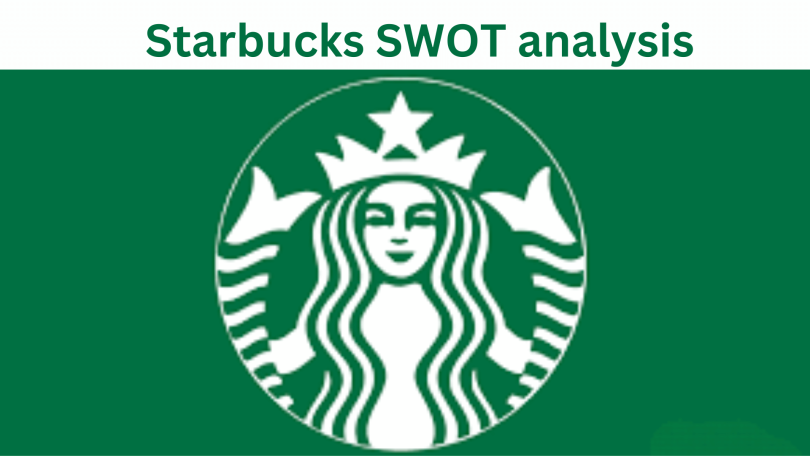

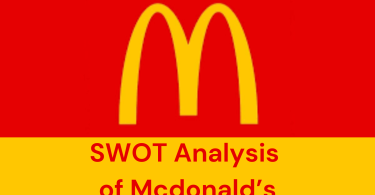


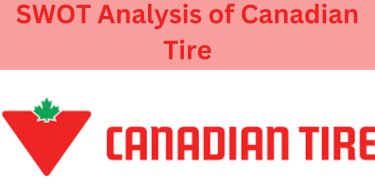

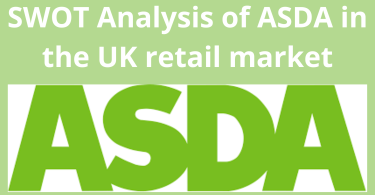
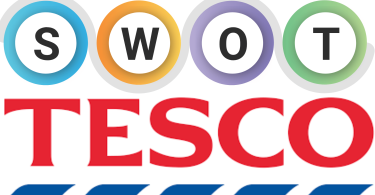

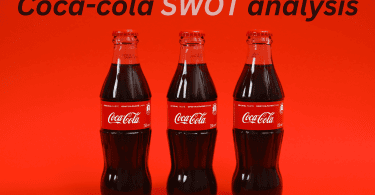
Leave a Comment